When you buy a product through our links below, we may earn money from our affiliate partners to help support the site. However, this does not affect our evaluation or recommendation of each product. See our list of partners & how we get paid here. You can also learn our process for reviewing tennis gear here.
After testing, studying, and researching all the best tennis racquet brands, we have our picks for the best tennis racquets overall for 2024.
Whether you are a beginner or a more advanced tennis player, you have a lot of choices when it comes to racquets. Below, we’ll help you find the perfect racquet for your skill level, budget, and preferences. Before we get into the specifics, here is the list of top racquets for 2024.
Leave a comment at the bottom of this page for more personalized racquet recommendations from one of our experts.
The 15 Best Tennis Racquets for 2024
The table below has the top racquets based on skill level and playing style.
These are not necessarily in the best order for you. Depending on your skill level, athletic ability, and experience, some racquets will be better for you than others. We recommend reading our detailed reviews of each racquet to choose the best option for you.
Click the links below to order your racquet from Tennis Warehouse.
| Category | Racquet |
|---|---|
| Best Racquet for Easy Power | Babolat Pure Drive Jump to Review |
| Best Budget Racquet for Beginners | Head TI S6 Jump to Review |
| Best Arm-Friendly Racquet | Wilson Clash 100 Jump to Review |
| Best Racquet for Learning Topspin | Prince Ripstick 100 Jump to Review |
| Best Light Racquet for Power and Spin | Head Boom MP Jump to Review |
| Best Racquet for Control and Spin for Advanced Players | Prince ATS Textreme Tour 98 Jump to Review |
| Best Racquet for Control and Feel for Advanced Players | Wilson Pro Staff v14 Jump to Review |
| Best Racquet for Forgiveness and Power | Yonex Ezone 100 Jump to Review |
| Best Racquet for Maximum Spin | Babolat Pure Aero Jump to Review |
| Great for Comfort and Power | Head Extreme MP Jump to Review |
| Best Heavy Racquet for Stability and Feel | Yonex Percept 97H Jump to Review |
| Great All-Around Racquet | Head Radical Pro Jump to Review |
| Great Combination of Control and Power | Wilson Blade 98 v9 Jump to Review |
| Best All-Around Racquet for Advanced Players | Head Speed Pro Jump to Review |
| Best Platform Racquet | Dunlop CX 200 Tour 16×19 Jump to Review |
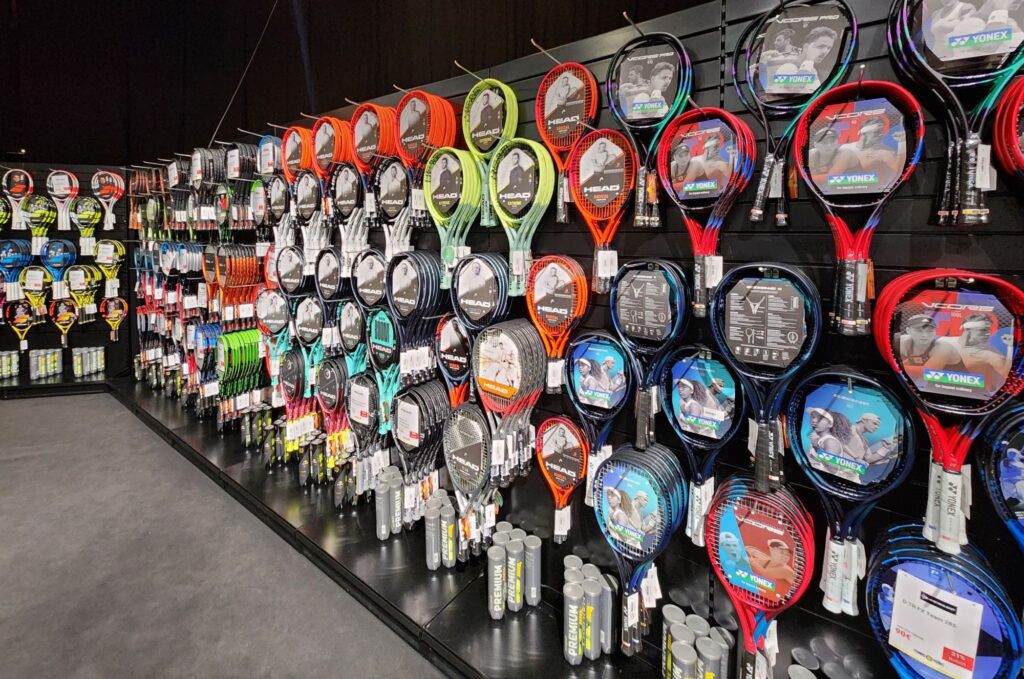
More Resources on the Best Tennis Racquets
If you’d like to see more racquets or want to do further research on choosing the best racquet, these resources will help. Read our reviews by skill level, brand, or type of tennis racquet.
Best Tennis Racquet Brands
Tennis Racquet Reviews By Type
3 Steps to Find the Perfect Tennis Racquet for Your Game
Free checklist with 27 racquet recommendations
Reviews of the 15 Best Tennis Racquets for 2024
Below, we’ll review each of the top racquets on our list in more detail.
Babolat Pure Drive
- Skill Level: Most skill levels.
- Where It Excels: Power at the baseline & on serves.
- What It Lacks: Not the best for control, but still solid.
The Pure Drive has been one of the top tennis racquets in the world for players of all abilities for years. Used by several professional tennis players, this racquet is known for its power from the baseline. It also helps you create good spin, offers solid stability, in a comfortable frame. The Pure Drive also tops our list for the best tennis racquets for women.
Read our full Babolat Pure Drive Review.
Specifications
- Head Size: 100 sq. in.
- Strung Weight: 11.2 oz.
- Length: 27 in.
- String Pattern: 16×19
Head TI S6
- Skill Level: Beginners
- Where It Excels: Great starter racquet that helps with power for under $100.
- What It Lacks: Serious beginners will struggle with control as they improve their game.
For beginners who are interested in tennis but not sure they want to commit for the long term, the Head TI S6 is a great racquet. It’s affordable, yet still offers excellent quality that will allow you to improve. It has a large head size and sweet spot which helps new players generate good power and create confidence. The 16×19 string pattern makes this one of the best tennis racquets for spin. It’s also one of the best tennis gifts for players just starting out. If you improve to the intermediate level this racquet will still work, but you may consider switching to a more advanced racquet like the Clash below.
Read our full Head TI S6 Review.
Specifications
- Head Size: 115 sq. in.
- Strung Weight: 8.9 oz.
- Length: 27.75 in.
- String Pattern: 16×19
Wilson Clash 100
- Skill Level: Intermediate
- Where It Excels: This is the most arm-friendly, comfortable racquet on the market with no real weaknesses.
- What It Lacks: It lacks enough power for low-level beginners and doesn’t have the stability or control needed for a high-level advanced racquet.
The Clash is the best tennis racquet for intermediate players. It has a great combination of control and power in a comfortable 100-inch frame. It’s known for being very arm friendly for people with tennis elbow. Intermediate players will find they can hit with good spin and control with this racquet while improving their game.
Read our full Wilson Clash Review.
Specifications
- Head Size: 100 sq. in.
- Strung Weight: 11 oz.
- Length: 27 in.
- String Pattern: 16×19
Prince Ripstick 100
- Skill Level: Beginner to Intermediate
- Where It Excels: Easy to swing & generate spin.
- What It Lacks: Not great control or stability against fast paced balls.
The Ripstick is one of the best tennis racquets for spin. The open string pattern (16×18) helps beginners and intermediate players learn topspin. This racquet has an easy-to-swing frame with O-Ports that improve racquet head speed. You’ll generate easy power on groundstrokes and serves.
Read our full Prince Ripstick Review.
Specifications
- Head Size: 100 sq. in.
- Strung Weight: 11.2 oz.
- Length: 27 in.
- String Pattern: 16×18
Head Boom MP
- Skill Level: Beginner to Intermediate
- Where It Excels: Power, spin, maneuverability, & comfort. This is a balanced racquet for high-level beginner to high-level intermediate players.
- What It Lacks: Stability on volleys & returning fast serves.
The Head Boom is a new racquet that is built for the modern club tennis player. It has a very comfortable 100-inch frame that is easy to swing. You’ll create plenty of power and spin from the baseline. The lightweight handling lets you move around the court with ease and it adds MPH to your serve as well.
Read our full Head Boom Review.
Specifications
- Head Size: 100 sq. in.
- Strung Weight: 11.0 oz.
- Length: 27 in.
- String Pattern: 16×19
Prince ATS Textreme Tour 98
- Skill Level: Intermediate to Advanced
- Where It Excels: Good control & very spin-friendly for a high-level racquet.
- What It Lacks: It doesn’t provide much pop.
The Prince ATS Textreme Tour 98 is a modern racquet that provides excellent control. This 98 square inch version provides a little more power than the Tour 95, making it a more balanced racquet. It has good spin potential, stability, and is very arm-friendly for an advanced racquet.
Read our full Prince Tour Review.
Specifications
- Head Size: 98 sq. in.
- Strung Weight: 11.4 oz.
- Length: 27 in.
- String Pattern: 16×19
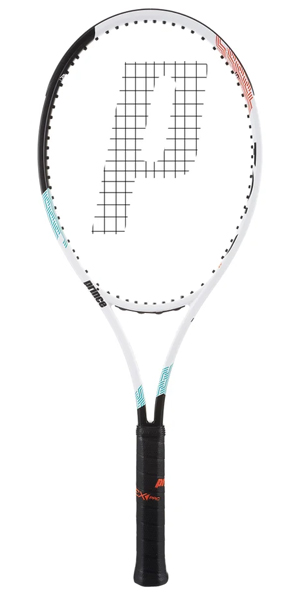
Wilson Pro Staff v14
- Skill Level: Advanced
- Where It Excels: Precise feel & control. Great stability against pace as well.
- What It Lacks: Heavier racquet that is more difficult to maneuver.
The Pro Staff is designed with and used by Roger Federer. This advanced racquet has a comfortable, stable, 97 square inch frame with an open 16×19 string pattern which helps increase power and spin. This is one of the best tennis racquets for advanced players on the market. It handles pace well and offers unmatched feel on volleys and slice shots.
Read our full Wilson Pro Staff Review.
Specifications
- Head Size: 97 sq. in.
- Strung Weight: 11.7 oz.
- Length: 27 in.
- String Pattern: 16×19
Yonex Ezone 100
- Skill Level: Intermediate to Advanced
- Where It Excels: Great combination of power & feel.
- What It Lacks: Not great stability for an advanced racquet resulting in loss of control on some volleys.
Yonex is a fast growing tennis brand that makes some of the best racquets in the world. The Ezone is a well balanced racquet built with great power, comfort, and feel. It has a 100 square inch frame and open string pattern for plenty of spin as well. Any player who wants controlled power from the baseline will like this racquet.
Read our full Yonex Ezone Review.
Specifications
- Head Size: 100 sq. in.
- Strung Weight: 11.2 oz.
- Length: 27 in.
- String Pattern: 16×19
Babolat Pure Aero
- Skill Level: Intermediate & Advanced
- Where It Excels: Maximum spin plus good power.
- What It Lacks: Control & stability when defending against pace.
Used by Rafael Nadal, the Babolat Pure Aero is an offensive weapon. It will help you generate tons of spin and power on both groundstrokes and serves. If you get an approach shot, for example, this racquet is what you’ll want in your hands. It’s a great racquet for intermediate and advanced tennis players who play with aggression.
Read our full Babolat Pure Aero Review.
Specifications
- Head Size: 100 sq. in.
- Strung Weight: 11.2 oz.
- Length: 27 in.
- String Pattern: 16×19
Head Extreme MP
- Skill Level: Any Skill Level
- Where It Excels: Power, spin, & easy to maneuver.
- What It Lacks: Not great for control or volleys.
The Extreme is a great racquet for most players. Beginners will enjoy the power level and large sweet spot. Intermediate players can use this racquet to develop their topspin and slice skills. Advanced players will be able to control the point with aggressive strokes and add power to their serve.
Read our full Head Extreme Review.
Specifications
- Head Size: 100 sq. in.
- Strung Weight: 11.2 oz.
- Length: 27 in.
- String Pattern: 16×19
Yonex Percept 97H
- Skill Level: Advanced
- Where It Excels: Stability & precise feel.
- What It Lacks: Maneuverability. This is a heavy tennis racquet.
This advanced tennis racquet is great for athletic, physically strong players who can swing fast. The heavy weight of this racquet helps generate power and increases stability on volleys and returns. The 16×19 string pattern adds even more power and spin, while the 97 square inch Yonex frame improves comfort.
Read our full Yonex Percept Review.
Specifications
- Head Size: 97 sq. in.
- Strung Weight: 12.2 oz.
- Length: 27 in.
- String Pattern: 16×19
Head Radical Pro
- Skill Level: High-Level Intermediate to Advanced
- Where It Excels: Excellent blend of control, feel, maneuverability, and power.
- What It Lacks: There aren’t any weaknesses with this racquet, but no obvious strengths either.
The Radical Pro is a very well-balanced tennis racquet for modern power baseline players. It is easy to swing, helping you generate good racquet head speed, power, and spin. It also has Head’s Graphene 360+ technology which adds comfort and feel to the frame. It’s one of my personal favorite racquets for rallying from the baseline.
Read our full Head Radical Review.
Specifications
- Head Size: 98 sq. in.
- Strung Weight: 11.7 oz.
- Length: 27 in.
- String Pattern: 16×19

Wilson Blade 98 16×19 v9
- Skill Level: Intermediate & Advanced
- Where It Excels: One of the most comfortable advanced racquets on the market.
- What It Lacks: Not great for generating power.
The Blade is one of the most popular racquets in the world. This version of the Blade is a very comfortable, arm-friendly racquet. It has good stability for its weight and helps you control both groundstrokes and volleys with a combination of spin and precise feel. This racquet is great for players who can generate their own power, but want something easy on the body.
Read our full Wilson Blade Review.
Specifications
- Head Size: 98 sq. in.
- Strung Weight: 11.4 oz.
- Length: 27 in.
- String Pattern: 16×19
Head Speed Pro
- Skill Level: Advanced
- Where It Excels: Well-balanced racquet with good control & feel with decent power.
- What It Lacks: Doesn’t excel in any one area.
Used by Novak Djokovic, this is an all-around excellent racquet for high-level players. The 100 square-inch frame offers good power, while the tight 18×20 string pattern helps players with control and feel. The stable frame makes it a good racquet for both offensive and defensive shots. The Head Speed Pro is a great racquet for all court players. This is also the racquet I personally use.
Read our full Head Speed Review.
Specifications
- Head Size: 100 sq. in.
- Strung Weight: 11.6 oz.
- Length: 27 in.
- String Pattern: 18×20
Dunlop CX 200 Tour 16×19
- Skill Level: Advanced
- Where It Excels: Excellent control & feel with a low stock weight perfect for customization.
- What It Lacks: Very low power level in stock form.
The Dunlop CX 200 Tour 16×19 is the perfect platform racquet. That means it makes a great racquet for anybody that likes to customize racquets to their desired specs. It has a fairly low starting weight for an advanced, control-oriented racquet, and is very low powered. When you add weight to it, you get phenomenal control with above-average spin potential and great feel. This racquet is a superb racquet that performs its best for players that customize it by adding weight until it matches their desired specs.
Read our full Dunlop CX Review.
Specifications
- Head Size: 95 sq. in.
- Strung Weight: 11.5 oz.
- Length: 27 in.
- String Pattern: 16×19
Buyer’s Guide: How to Choose a Tennis Racquet
You may not even know where to start or what questions to ask when looking for a new racquet. First, you need to decide your skill level.
What is your skill level?
Put yourself into one of these three categories.
- Beginner: I’m just starting to learn tennis.
- Intermediate: I used to play tennis or started playing recently and want to keep improving.
- Advanced: I play regularly and control shots with placement, spin, and power.
After you know your skill level, you’ll want to consider your overall goals, athletic ability or hand-eye coordination, and budget.
Consider Your Tennis Goals, Athletic Ability, & Budget
Depending on what you want to achieve, some racquets will be better for you than others.
Your Tennis Goals: Do you want to improve? Or just play for fun?
If you’re serious about improving your tennis game, then you’ll want to invest in the best tennis gear, including a high-quality racquet (or two!). A backup racquet is a good idea too, preferably the same as your first racquet. This allows you to keep playing even if you break your tennis strings on court.
See our list of the best tennis bags to carry your racquets.
If you just want a reliable racquet to play recreationally a few times per month, then you’ll probably only need one racquet and can choose something a bit cheaper.
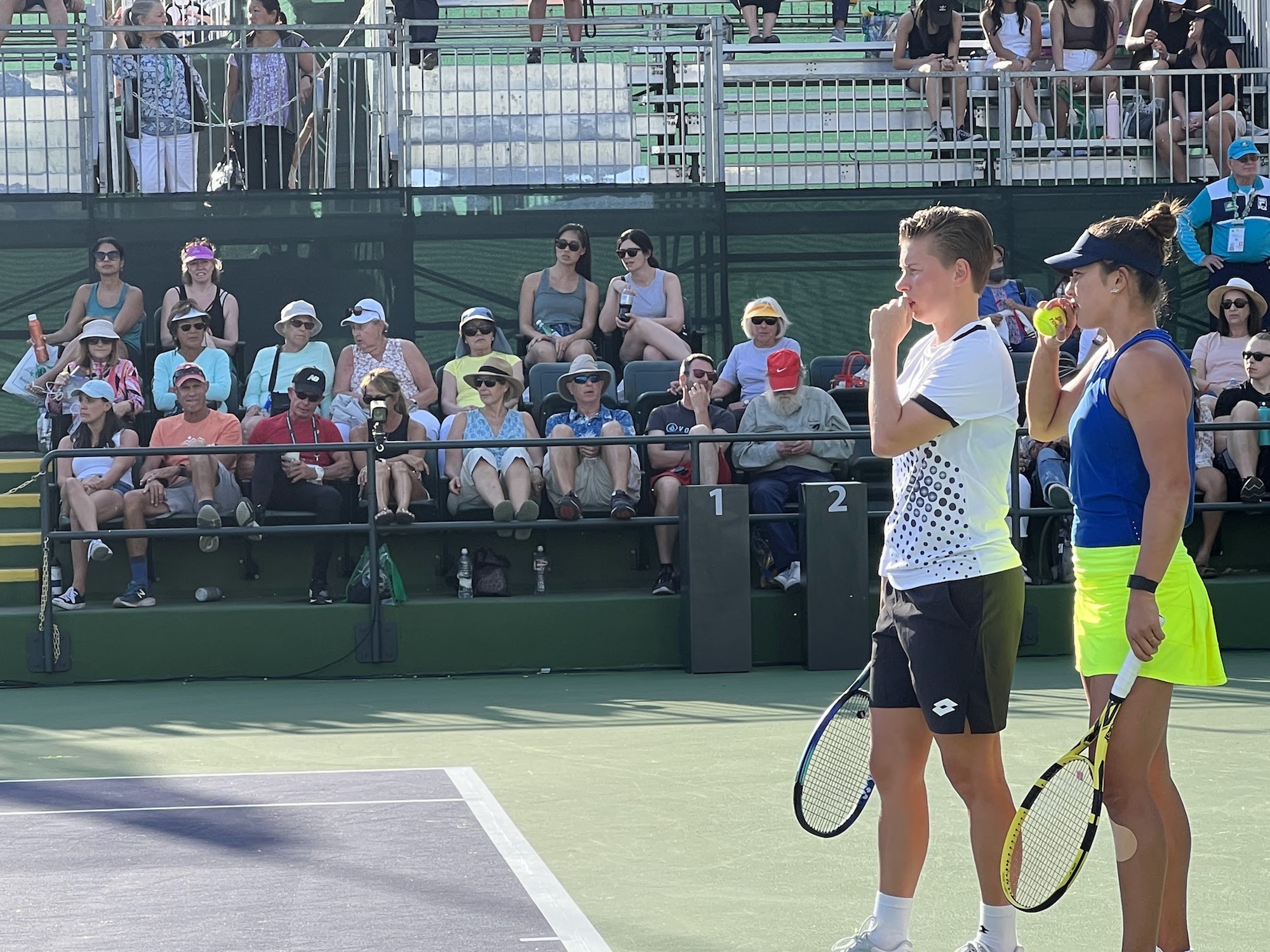
How Athletic Ability & Hand-Eye Coordination Determine The Best Racquet for You
- If you’re a beginner, have you played other sports in the past?
- What are your fitness level, mobility, hand-eye coordination, and physical strength?
Older players who are not as athletic as they once were or players without the best hand-eye coordination should consider the best tennis racquets for power or those with a larger head size.
Someone who is in their 30’s and plays lots of sports can use a more control-oriented racquet with a smaller head size, even if they both have the same skill level.
What is your budget?
The best racquets can be well over $200. That price doesn’t make sense for a beginner who isn’t sure if they will keep playing tennis. Think about what budget makes sense for you based on the goals above and your income.
Serious tennis players should budget at least $150 per racquet.
If you are on a budget but still want a high-quality racquet, try to take advantage of sales. Most companies release new versions of their racquets every 2-3 years. When they release a new version, they will almost always give a significant discount to the remaining stock of the outgoing version.
Recreational players can find racquets for around $100 or less.
The best part is, most updates from one version to the next of the same racquet are minimal, so you will still be getting excellent quality racquets for a fraction of the cost!
Tennis Racquet Specification Chart
Many tennis racquet brands can confuse you with terms like balance, swingweight, flex rating, and so on. We’ve made it simple for you, with just the most important specifications below.
This chart will give you a high-level idea of what to look for in a tennis racquet.
| Racquet Specifications | Beginner Players Only | Intermediate & Some Beginner | Advanced & Some Intermediate |
|---|---|---|---|
| Head Size (sq. inches) | 107 – 115 | 100 – 110 | 95 – 100 |
| Length (inches) | 27-28 | 27 – 27.5 | 27 – 27.5 |
| Weight (strung) | Under 11 Ounces | 10.1 – 11.5 Ounces | Over 11 Ounces |
| Price | Under $150 | $100 & up | $150 & up |
| Power vs Control | More Power | Balanced Racquet | More Control |
Stop paying full price for tennis gear! Get deals on shoes, racquets & more up to 70% off.
Terms to Know When Shopping for Tennis Racquets
When you start shopping for a new racquet, there are many terms that the manufacturers use to help you understand how the racquet will perform on the court. Below, we’ll go over the most important terms to understand, and other common terminology, mostly for advanced players.
Tennis Racquet Terms Everyone Should Know
- Head Size: The head size refers to the part of the racquet that holds the strings together. Most modern racquets have a head size of 95 to 120 square inches.
- Weight: The weight refers to the weight of the entire racquet, sometimes measured with strings, sometimes without. One of the most popular tennis racquet sellers, Tennis Warehouse, measures the strung weight of each racquet. When comparing, make sure you are consistent. Most racquets fall between 9.5 and 12.5 ounces strung.
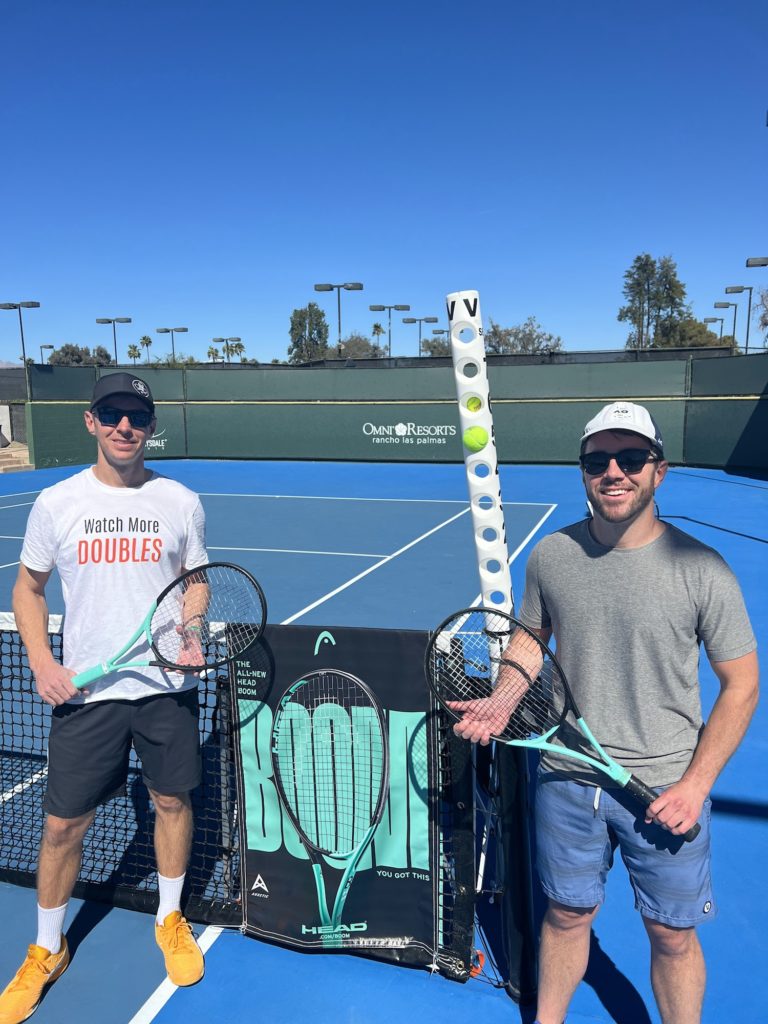
- Length: A standard tennis racquet is 27 inches long, but may be up to 29 inches. Junior racquets (made for kids) range from as little as 17 inches for kids barely able to swing a tennis racquet, to a standard 27 inches long. Anything over 27 inches is considered “extended length.”
- String Pattern: String pattern refers to the number of main (vertical) and cross (horizontal) strings in the racquet. The most common string patterns are 16×19 and 18×20, but any number can be used. The higher the numbers, the closer the strings will be together. This is called a “tight” string pattern and helps players with control and feel. Smaller numbers of mains and crosses make for an “open” string pattern adding power and spin. If you need help deciding which type of string to use, see our list of the best tennis strings. If that list is a little overwhelming or confusing, learning about the different tennis string types might help you narrow your search.
- Grip Size: When you purchase a racquet, you can choose your grip size. These available grip sizes are typically 4 ⅛, 4 ¼, 4 ⅜, 4 ½, & 4 ⅝. You’ll often see them numbered 1, 2, 3, 4, 5. For most players, a 4 ⅜ (#3) grip will do. Depending on your hand size, go up or down an eighth accordingly. When holding the racquet in your hand, there should be a small gap between the tips of your fingers and your hand.

Other Terms for Higher Level Players
Below are other terms you may see, but most players can ignore. These terms are used by more advanced players who need to get every detail right.
- Balance: The balance of a racquet refers to how the weight is distributed throughout the racquet. Some racquets are “head light” meaning there is more weight in the handle, increasing maneuverability. Head heavy racquets have added stability and power but are more difficult to swing.
- Swingweight: This term refers to the ease with which a player can swing the racquet. Most racquets have a swingweight between 305 and 335 (strung). A higher swingweight means the racquet is more difficult to swing. Typically head heavy racquets have a higher swingweight.
- Stiffness (or flex): The stiffness of a racquet refers to how flexible it is. Most racquets will fall between 55 and 75, with high numbers equating to stiffer racquets. A stiffer racquet will have increased power and stability but less comfort and feel. Players with elbow tendonitis should consider a less stiff racquet.
- Beam Width: The beam width refers to the racquet frame’s width when looking at it from a profile view. This is usually measured in millimeters. A racquet with a wider beam will typically have increased power while smaller beams will offer better control and feel.
When purchasing a tennis racquet, also keep in mind that you can change the properties of your racquet slightly post-purchase. Learn how by checking out our article on how to customize a tennis racquet.
Demo Racquets to Discover What You Like
Lastly, when shopping for a new tennis racquet, it’s important to demo. Tennis Warehouse allows you to demo up to three racquets at a time. The price you pay for each demo is deducted from any new racquet you purchase, so it’s basically free to demo.
Local tennis shops will also allow you to try out racquets before purchasing them. With so many racquets available in today’s market, it’s difficult to find the perfect racquet for you by just looking at the specs.
Once you have an idea of what kind of racquet you want to try, demo 2, 3, or even 4 racquets and take them all out onto the practice court together. Make sure to practice all aspects of your game, and even talk to your hitting partner or coach and see which racquet they think helped you play your best. Then you can purchase your new racquet with confidence that you made a smart purchase.
If you aren’t sure where to start, we can help! Email us or add a comment telling us a little bit about you as a player, what racquet you’re currently using, and what you want out of a new racquet, and we’ll give you personal recommendations to help you find the right racquet.
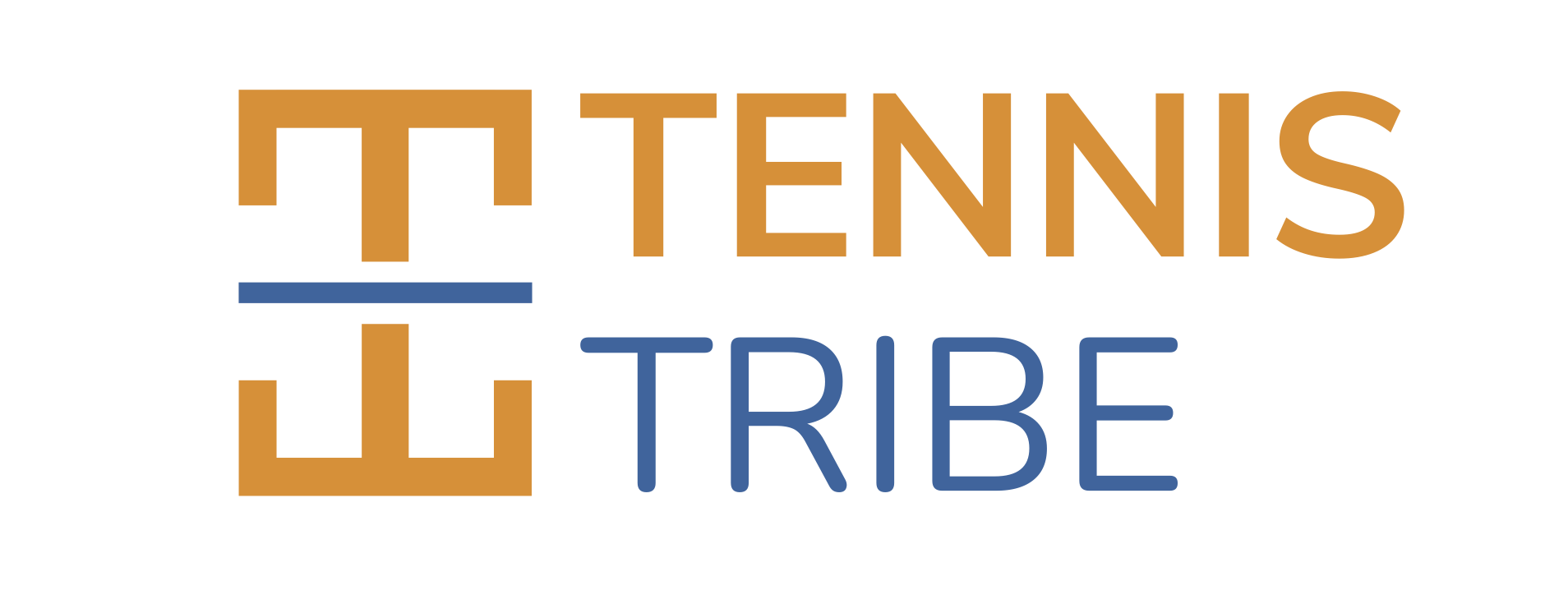
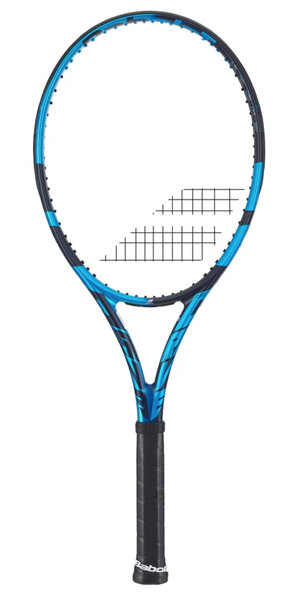
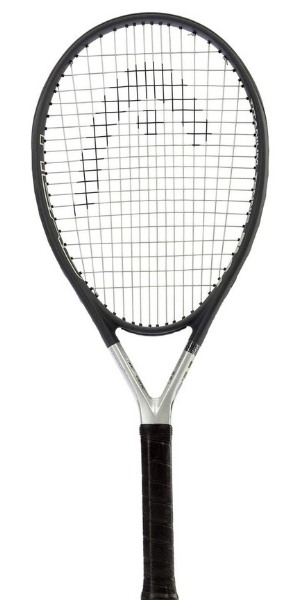
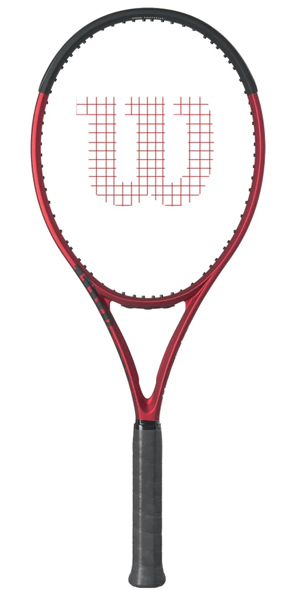
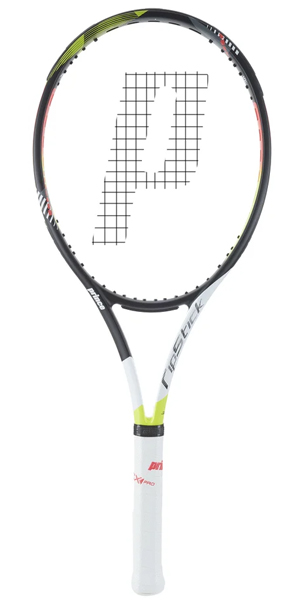
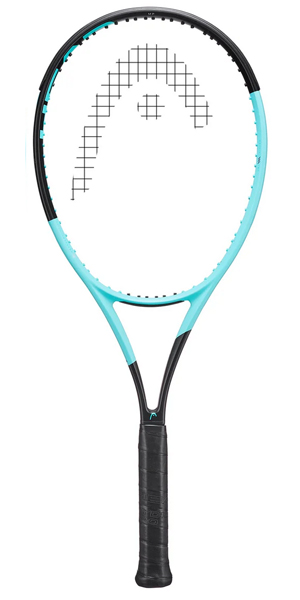
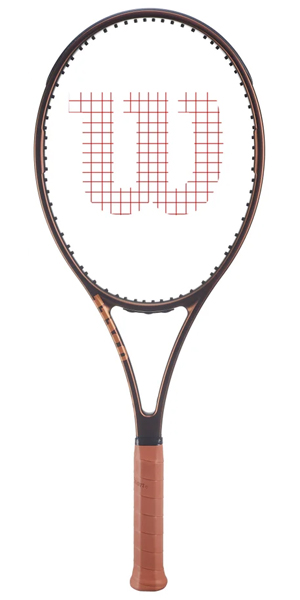
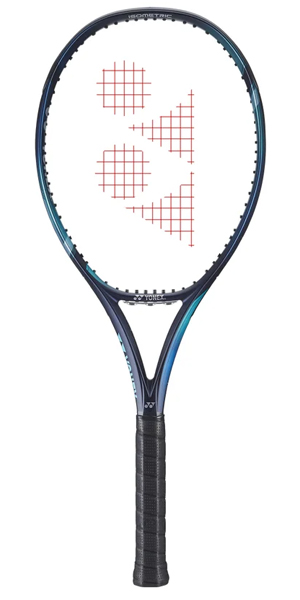
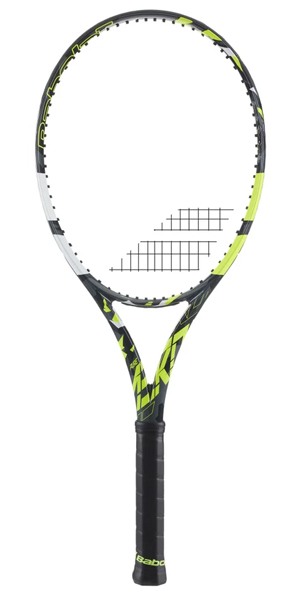

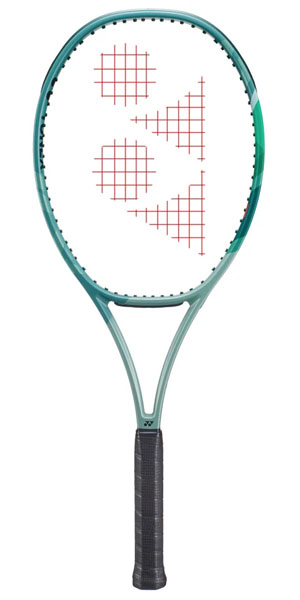
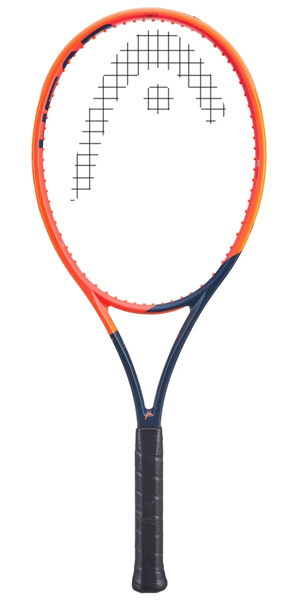
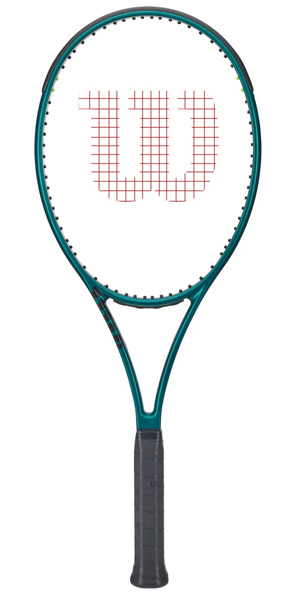
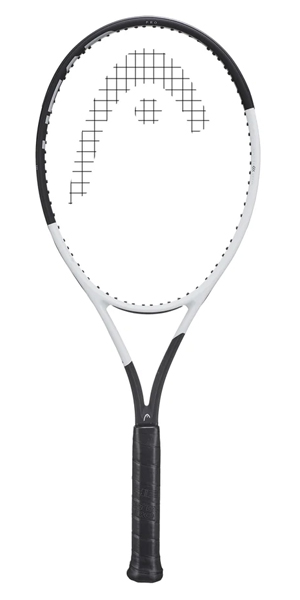

Leave a Reply